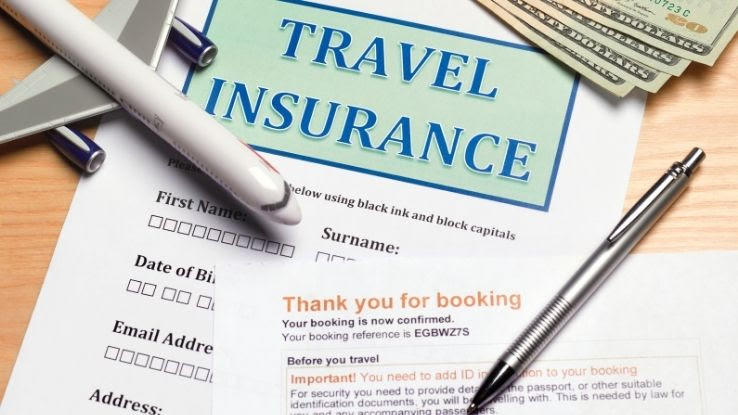The Facts About Pacific Prime Uncovered
The Facts About Pacific Prime Uncovered
Blog Article
Everything about Pacific Prime
Table of ContentsFacts About Pacific Prime UncoveredThe Ultimate Guide To Pacific PrimePacific Prime for BeginnersThe Buzz on Pacific PrimeThe 5-Minute Rule for Pacific Prime

This is due to the fact that the information were accumulated for a duration of solid financial efficiency. Of the estimated 42 million people who were without insurance, just about regarding 420,000 (concerning 1 percent) were under 65 years old, the age at which most Americans come to be eligible for Medicare; 32 million were grownups between ages 18 and 65, around 19 percent of all adults in this age group; and 10 million were children under 18 years of age, regarding 13.9 percent of all youngsters (Mills, 2000).
These quotes of the variety of individuals without insurance are produced from the annual March Supplement to the Existing Population Study (CPS), performed by the Demographics Bureau. Unless otherwise kept in mind, national price quotes of individuals without wellness insurance and percentages of the population with different sort of insurance coverage are based on the CPS, one of the most commonly used resource of quotes of insurance coverage and uninsurance prices.
How Pacific Prime can Save You Time, Stress, and Money.

Still, the CPS is particularly useful since it creates annual estimates reasonably rapidly, reporting the previous year's insurance coverage approximates each September, and because it is the basis for a consistent collection of quotes for more than twenty years, permitting for evaluation of patterns in protection with time. For these reasons, in addition to the substantial usage of the CPS in other researches of insurance protection that are offered in this record, we depend on CPS quotes, with restrictions kept in mind.

The quote of the variety of without insurance people increases when a populace's insurance condition is tracked for several years. Over a three-year period beginning early in 1993, 72 million people, 29 percent of the U.S. https://pacificpr1me.bandcamp.com/album/pacific-prime. population, lacked coverage for at least one month. Within a solitary year (1994 ), 53 million individuals experienced a minimum of a month without coverage (Bennefield, 1998a)
Six out of every 10 uninsured adults are themselves used. Although functioning does enhance the probability that one and one's family members will certainly have insurance, it is not a guarantee. Even members of households with 2 full time wage income earners have almost a one-in-ten chance of being uninsured (9.1 percent without insurance rate) (Hoffman and Pohl, 2000).
Pacific Prime Fundamentals Explained
New immigrants represent a considerable proportion of individuals without wellness insurance. One evaluation has attributed a significant section of the current growth in the size of the U.S. uninsured populace to immigrants that showed up in the nation in between 1994 and 1998 (Camarota and Edwards, 2000). Current immigrants (those that came to the United States within the past four years) do have a high rate of being uninsured (46 percent), but they and their kids represent simply 6 percent of those without insurance coverage across the country (Holahan et al., 2001).
The connection in between medical insurance and accessibility to care is well established, as documented later on in this chapter. The connection in between health and wellness insurance policy and health and wellness end results is neither straight neither basic, an extensive professional and health and wellness services research literary works links health and wellness insurance coverage to better accessibility to care, better quality, and boosted individual and populace health and wellness condition.
Levels of evaluation for examining the effects of uninsurance. It concentrates especially on those without any health insurance for any type of length of time.
The 7-Minute Rule for Pacific Prime
The troubles dealt with by the underinsured remain in some aspects comparable to those dealt with by the uninsured, although they are generally view website much less serious. maternity insurance for expats. Uninsurance and underinsurance, however, involve clearly different plan concerns, and the techniques for addressing them may differ. Throughout this study and the 5 records to follow, the main focus gets on persons with no medical insurance and thus no help in spending for healthcare beyond what is available through charity and safeguard organizations
Wellness insurance coverage is a powerful factor affecting invoice of treatment since both clients and medical professionals reply to the out-of-pocket price of solutions - https://experiment.com/users/pacificpr1me. Medical insurance, nonetheless, is neither essential nor sufficient to obtain accessibility to medical solutions. However, the independent and direct result of health and wellness insurance coverage on accessibility to health and wellness services is well established.
Others will obtain the health and wellness care they need also without health insurance, by paying for it out of pocket or seeking it from companies who offer care cost-free or at extremely subsidized rates. For still others, health insurance policy alone does not ensure receipt of treatment because of various other nonfinancial barriers, such as an absence of healthcare providers in their area, restricted access to transportation, illiteracy, or linguistic and cultural differences.
What Does Pacific Prime Do?
Formal research regarding uninsured populaces in the United States dates to the late 1920s and early 1930s when the Committee on the Price of Treatment produced a series of reports regarding funding physician workplace visits and hospitalizations. This issue became prominent as the varieties of clinically indigent climbed up throughout the Great Anxiety.
Report this page